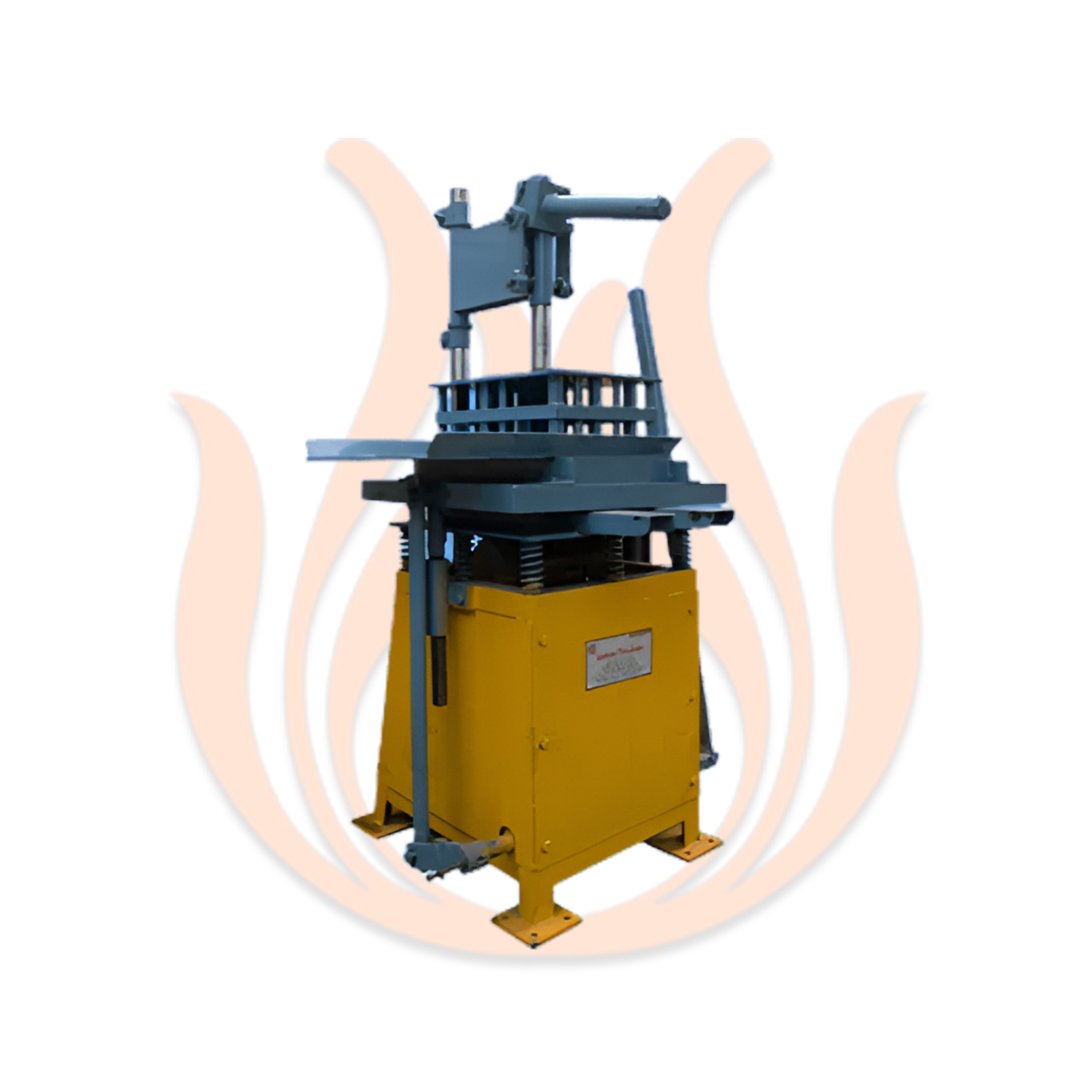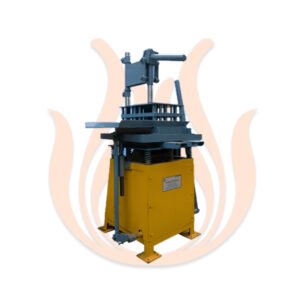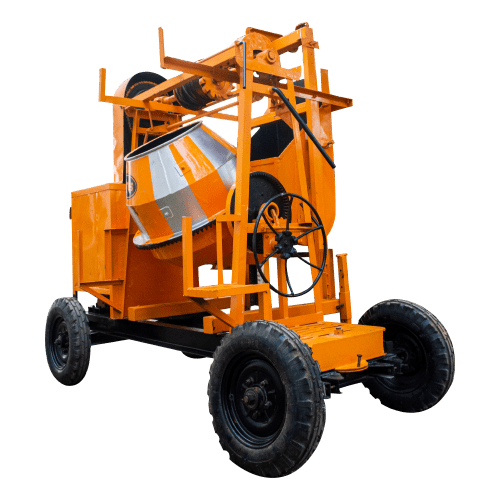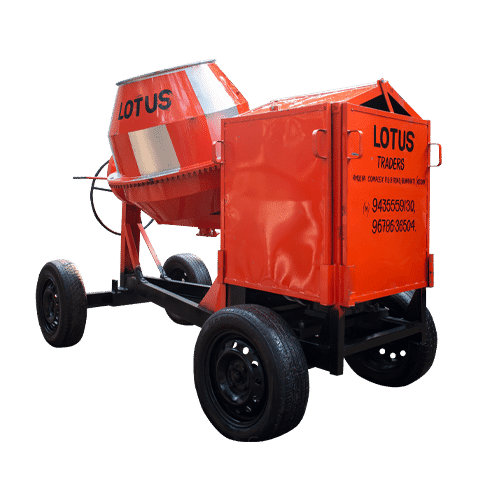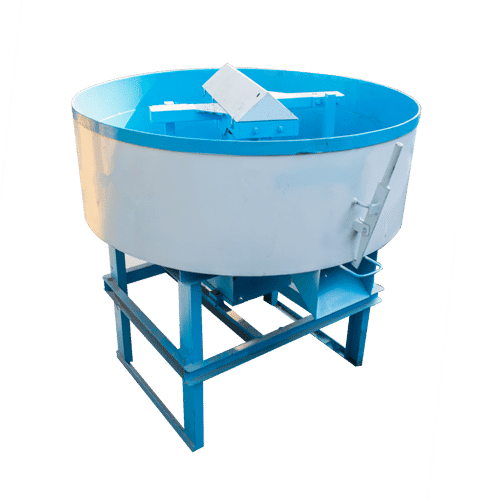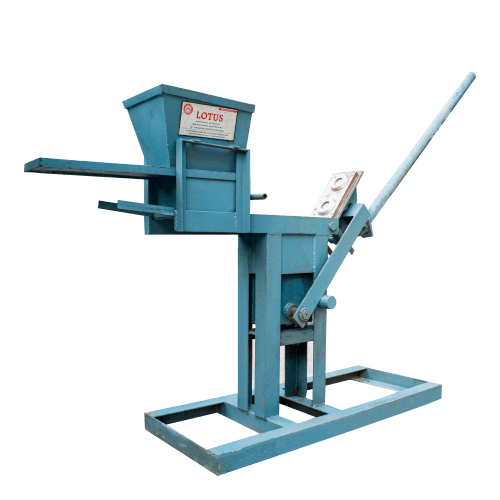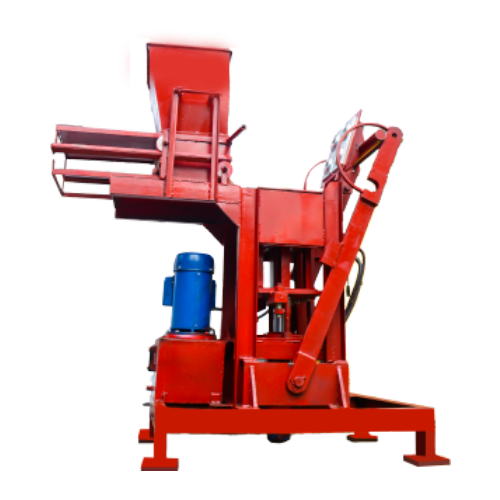New 6 Cavity Manual Brick Machine
6 cavity Manual Brick Machine
- High quality materials
- Compliance with Standards
- Clear Product Information
- Warranty & Support
- Product Testing & Certification
- Delivery & Policy
- Ask a Question
- Estimated Delivery: 5 Days – 10 Days
FEATURES | SPECIFICATION |
Capacity | 1800 Pcs/Day |
Power Required | 1 HP (Single Phase) Vibrator Motor |
Usages | Manufacture Concrete Bricks |
Process | Manual |
Brick Size | 9 x 4 x 3 Inch |
Cavity | Six |
What is 6 Cavity Manual Brick Machine?
A manual 6 cavity brick making machine is a type of machine that is operated manually without the use of electricity or automation. Designed for manual production of bricks and blocks. 6 cavity means that the container has six different sizes or holes for storing raw materials such as soil, concrete and other building materials. The machine makes six bricks at a time on each cycle. This type of machine is generally inexpensive, simple and suitable for medium and large brick production, especially in areas where power is limited. Craftsmanship includes filling out forms, mixing materials and flattening and compressing the material, leveling, and ejecting the formed bricks, making it a practical option in various construction and community development contexts.
Features of Manual 6 Cavity Brick Making Machine
Here are some key features of manual 6 cavity brick making machine :
- Manual Operation – As the name suggests, this machine operates manually, usually with one or more commands. It does not have an engine or automatic components in the process of brick making.
- 6 Cavity Design – The “6 cavity” part of the name indicates that this brick making machine is designed to make six bricks at a time. This helps in increasing efficiency and output of the production.
- Brick Making – The main purpose of this machine is to form raw materials such as clay, cement or concrete and transform them into brick shapes. Workers manually feed the material into the cavity of the machine, press and remove the finished brick when ready.
- Simple Design – Manual 6 brick making machines usually have a precision design that includes a die or hole to drill the brick and a tool to press the material. It is generally less complex and less expensive than a fully automated machine.
- Versatile Raw Material Compatibility – These machines can work with various raw materials such as clay, concrete, cement, and other locally available construction materials, making them adaptable to different regions and construction needs.
- Cost-effective – Manual brick making machines are inexpensive to purchase and easy to operate than automatic machines. Manual 6 cavity brick making machine require a low initial investment and low operating costs, which makes them affordable for small businesses and individuals.
- Customization – These machines are versatile and can be used to make bricks of different shapes, sizes and designs. This is especially useful when special or custom bricks are required for special construction or landscaping purposes
- Local Economic Impact – These machines can contribute to local economies by providing employment opportunities for skilled or semi-skilled labourers in brick-making operations.
Uses of Manual 6 Cavity Brick making Machine
Here are some uses of manual 6 cavity brick making machine:
- Small Brick Production – These machines are suitable for small brick production like house construction, small buildings, garden walls, boundary walls etc. It is suitable for projects where demand for bricks is not high.
- Residential Construction – 6-cavity brick making machine can be used to make bricks required for construction of apartments and residential buildings. Home owners and small builders can make their own building blocks and reduce the cost of buying bricks from suppliers.
- Renovation and Maintenance – When renovating an existing building, hand-made bricks can be used to produce bricks that match the size and style of the original bricks. This ensures the apparent durability of the repaired or repaired area.
- Custom Brick Making – These machines are versatile and can be used to make bricks of different shapes, sizes and designs. This is especially useful when special or custom bricks are required for special construction or landscaping purposes.
- Social Projects – Manual brick making machines can be used for social development projects such as construction of schools, clinics and community centres. They create local jobs and provide an economical way to produce the required bricks.
- Training and Education Objectives – These machines can be used in training programs to teach people the skills required to make bricks. They provide practical training and train construction workers.
- Brick Testing and Prototyping – In research and development projects related to the production of bricks and construction materials, these machines can be used for small testing and prototyping of various brick
- Remote or Rural areas – In remote or rural areas where electricity or modern machinery do not exist, hand-made brick makers provide an efficient and sustainable method of making bricks.
Benefits of Manual 6 Cavity Brick Making Machine
These machines are valuable tools in the construction and production of concrete products due to its many advantages. Some key benefits are:
- Cost-effective – Manual brick making machines are inexpensive to purchase and easy to operate than automatic machines. Manual 6 cavity brick making machine require a low initial investment and low operating costs, which makes them affordable for small businesses and individuals.
- Local Employment – These machines can contribute to local economies by providing employment opportunities for skilled or semi-skilled labourers in brick-making operations.
- Reduce Energy Consumption – Unlike automatic brick making machines that require electricity or fuel, manual machines use human power to operate, thereby reducing energy consumption and environmental impact.
- Local Production – The machine allows bricks to be produced locally and reducing the need to transport heavy bricks over long distances. This saves shipping costs and reduces carbon emissions.
- Value of Education and Training – This brick making machines can be an important tool for teaching people brick making skills, especially in vocational training programs or in areas where traditional building methods still exist.
- Simplicity – Manual brick making machines usually have a precision design that includes a die or hole to drill the brick and a tool to press the material. It is generally less complex and less expensive than a fully automated machine.
- Versatile Raw Material Compatibility – These machines can work with various raw materials such as clay, concrete, cement, and other locally available construction materials, making them adaptable to different regions and construction needs.
- Customization – These machines are versatile and can be used to make bricks of different shapes, sizes and designs. This is especially useful when special or custom bricks are required for special construction or landscaping purposes.
How the Manual 6 Cavity Brick Making Machine works
A manual 6 cavity brick making machine works by manually pouring and pressing raw materials such as clay cement into a brick moulds. Below is a step-by-step explanation of how the device works in general.
- Preparation of Raw Material – Before starting the machine they prepare the raw material for brick making. Depending on the type of brick you want to make, you may need clay, cement, sand, water, and other additives. By mixing these materials, a homogeneous and functional mixture is obtained, which can be used for the production of bricks.
- Mould Making – The machine is usually provided with a six-cavity mould. This means you can produce 6 bricks at once. Make sure the mould is clean and free of dirt from previous use.
- Fill the mould – Place the form on the machine platform. Workers then fill each of the six mould cavities by hand with a mixture prepared to make bricks. Fill each cavity evenly so that the bricks can be the same size and shape.
- Compress the Material – After the voids are filled, a machine lever or manual mechanism is used to compact the material in each void. This compaction step is important to ensure the strength and structural integrity of the brick by densifying the mixture and removing voids.
- Release and Remove the Brick – After squeezing the material, the pressure is released to the handle or mechanism. This hardens the brick formed in the mould. Depending on the type of material used, this may take some time, so be patient.
- Mould Removal – Once the bricks have hardened enough to hold their shape, carefully remove the mould from the machine bed. This step requires care to avoid damaging the bricks during removal.
- Unload Bricks – Tap or gently shake the mould to remove the bricks. The workers can then remove the bricks from the cavity. Place the bricks on a flat surface or rack to continue baking and drying. Depending on the environmental conditions and the types of materials used, this may take several days.
- Repeat this Process – The above steps are repeated for each batch of bricks you wish to produce. The workers continue to load, compact and remove the bricks until the required
What makes the Manual 6 Cavity Brick Making machine unique?
Some key elements that makes this machine unique are:
- Cost-effective – Manual brick making machines are inexpensive to purchase and easy to operate than automatic machines. Manual 6 cavity brick making machine require a low initial investment and low operating costs, which makes them affordable for small businesses and individuals.
- Versatility – These machines can be used to make different types of bricks such as bricks, cement mortar and concrete mortar depending on the material.
- Customization – These machines are versatile and can be used to make bricks of different shapes, sizes and designs. This is especially useful when special or custom bricks are required for special construction or landscaping purposes.
- Simplicity – Manual brick making machines usually have a precision design that includes a die or hole to drill the brick and a tool to press the material. It is generally less complex and less expensive than a fully automated machine.
- Environmental impact – These machines do not require electricity or fuel to operate, so they have a lower environmental impact than automatic brick making machines. Regions with limited access to energy sources are more stable.
- Educational value – These machines are used in vocational training programs and as a tool for teaching brick making techniques and construction skills. They help people acquire practical skills that can be used in various construction projects.
A 6-cavity brick making machine is a type of machine that is operated manually without the use of electricity or machinery. Designed for manual production of bricks and blocks. 6 holes means that the can has six different types or holes for inserting raw materials such as concrete, cement and other building materials.
The machine produces six bricks at a time each cycle. This type of machine is usually inexpensive, simple and suitable for making medium and large bricks, especially if capacity is limited. Craftmanship include filling out forms, mixing materials and designing and assembling materials, placing and casting concrete bricks, and optionally working in many construction and development organizations .Its flexibility makes it accessible to small businesses, organizations and individuals, resulting in economic growth and the development of local skills.
Frequently Asked Questions
Some factors to consider while buying this machine are:
- Check the device performance to ensure it meets your project requirements. Consider how many bricks it can make at once.
- Verify that the machine can produce bricks in the size and shape required for your construction project. Some machines can adjust the size of the bricks to accommodate different shapes of the bricks.
- Make sure the device can handle raw materials. Different models can be adapted for special materials such as clay, concrete or other structural mixes.
- Consider the mass of the body and the weight of the engine. Make sure your workspace is convenient and you can easily move it around if need be.
- Evaluate the device for ease of use. User-friendly design is even more important when your employees have different skills.
- Check the quality of the building and the materials used to make the device. Durable machines are able to withstand production failure and add value in the long run.
- Make sure your machine is adjusted to the size of your bricks. This method is useful if your page needs special features.
Here are reasons why you should want to buy this machine:
- Cost effective – Manual machines are usually cheaper than automatic ones. A manual 6 cavity brick making machine can be a cost-effective option for individuals, small businesses or small community projects.
- Independence from electricity – This machines work without electricity. In areas where the grid is unreliable or unavailable, hand-operated machines ensure continuous brick production.
- Use local resources – These devices enable the use of local raw materials such as clay or earth, reducing transport costs and ensuring sustainability.
- Suitable for small to medium sized projects – This machines are ideal for small to medium sized ceramic production making them ideal for local building projects, community programs or small businesses.
- Community Involvement and Skill Development – Many manual machines, including the 6-cavity models, allow for the customization of brick shapes and sizes, accommodating specific construction requirements or design preferences.
- Customization for Local Needs – Many portable machines, including this machines, allow you to customize the shape and size of the bricks to suit specific building requirements or design preferences.
- Flexibility in the use of raw materials – This machines are often designed to handle a variety of raw materials, allowing users to choose locally available materials and save costs.
- Smaller environmental impact – Local brick production helps reduce the environmental impact associated with transporting bricks over long distances. This is in line with the goals of sustainable development and reducing carbon dioxide emissions.
The advantages of using these machines are:
- Manual brick making machines are inexpensive to purchase and easy to operate than automatic machines. Manual 6 cavity brick making machine require a low initial investment and low operating costs, which makes them affordable for small businesses and individuals.
- These machines can contribute to local economies by providing employment opportunities for skilled or semi-skilled labourers in brick-making operations.
- Unlike automatic brick making machines that require electricity or fuel, manual machines use human power to operate, thereby reducing energy consumption and environmental impact.
- The machine allows bricks to be produced locally and reducing the need to transport heavy bricks over long distances. This saves shipping costs and reduces carbon emissions.
- This brick making machines can be an important tool for teaching people brick making skills, especially in vocational training programs or in areas where traditional building methods still exist.
- Manual brick making machines usually have a precision design that includes a die or hole to drill the brick and a tool to press the material. It is generally less complex and less expensive than a fully automated machine.
- This machines can work with various raw materials such as clay, concrete, cement and other locally available construction materials, making them adaptable to different regions and construction needs.
This machines are versatile and can be used to make bricks of different shapes, sizes and designs. This is especially useful when special or custom bricks are required for special construction or landscaping purposes.
Yes, Depending on the manufacturer, many portable machines, including this machines, allow you to customize the shape and size of the bricks to suit specific building requirements or design preferences.
The production capacity of this machine can vary based on factors such as the operators’ skill and the efficiency of the machine and the type of raw material used. As a general estimate, a manual 6-cavity brick making machine may produce around 300 to 600 bricks per hour depending on the specific design and operational characteristics.



